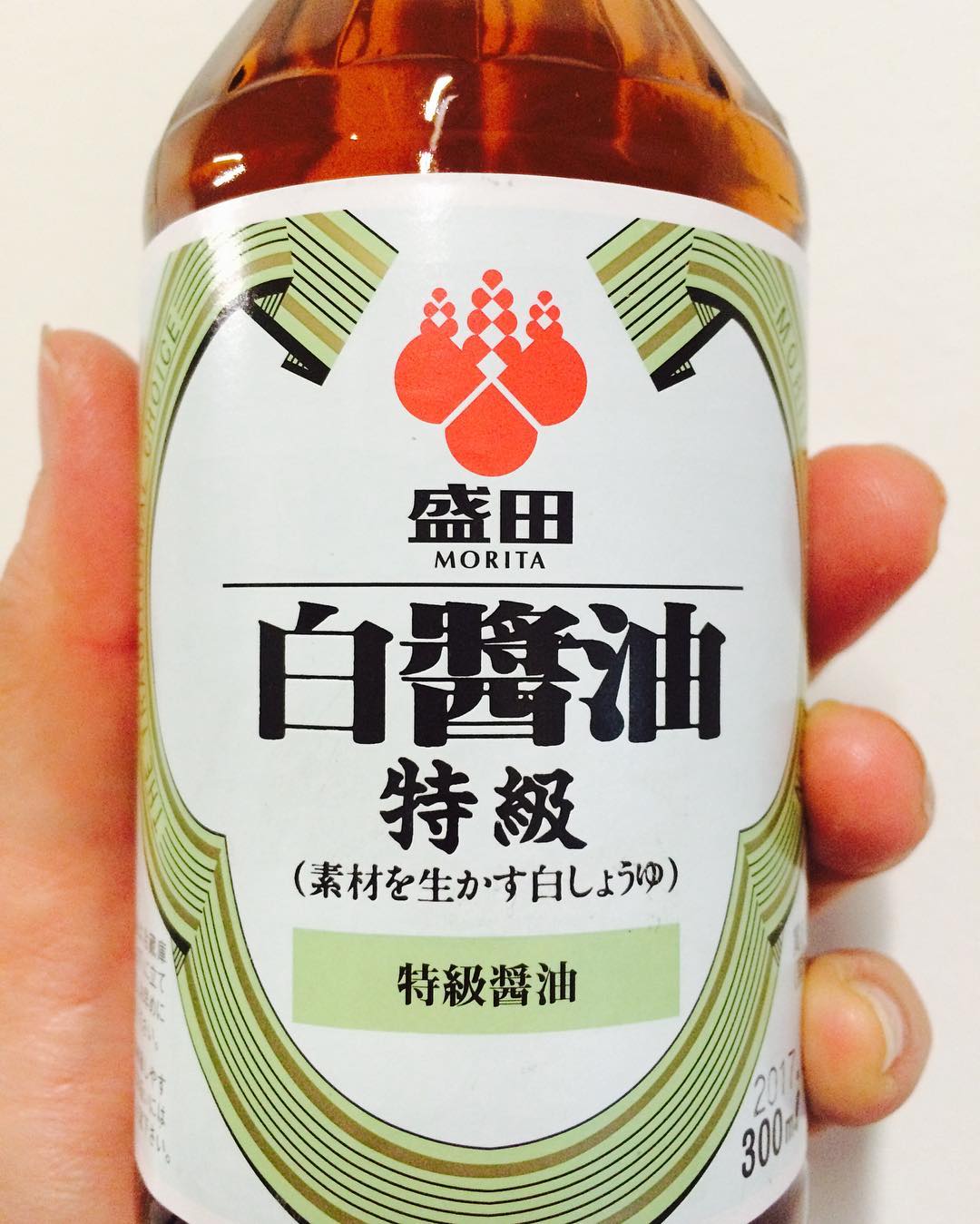8 kinds of traditional Japanese seasoning soy sauce, Kunbu soy sauce and recipes
Japan has many unique seasonings, among which "soy sauce" is indispensable when cooking. The Japanese will use different soy sauce for different dishes. This article will introduce you to 8 kinds of soy sauce and their usage.
"want to taste Japanese food" is the purpose of many people's visit to Japan. The reason why Japanese food is so delicious is related to its many unique seasonings.
Among them, the traditional seasoning "soy sauce" is indispensable when making Japanese cuisine. Now it is also easy to buy in foreign supermarkets, so it should be a very familiar seasoning for other countries.

After mixed fermentation of soybeans and wheat, salt is added to form "soy sauce gel", and the liquid pressed out is "soy sauce". Because it tastes better than salt and has a mixture of sour, sweet, bitter and layered taste, it is used in a variety of Japanese cuisine. Various regions of Japan will also adjust the proportion of manufacturing methods and materials to make a variety of unique "soy sauce."
The English word for "soy sauce" is "soy sauce", so some people pour it on the dish like French sauce. But "soy sauce" is a seasoning, not a sauce, and the salt content is quite high, so if ingested in large quantities, it is not good for your health, please use it appropriately!
The variety of "soy sauce" is quite rich, and the Japanese will use different "soy sauce" according to the dishes they want to cook or the food they want to eat. The following will introduce the types, processed products and applied recipes of "soy sauce" in Japan.
1. Thick soy sauce
80% of the soy sauce made in Japan is "thick soy sauce", which is also the most commonly used type of soy sauce in Japanese cuisine. Although "thick sauce" is not written on the bottle label of some goods, most of the goods sold in the supermarket are "thick soy sauce". Because its salt content is about 1 / 6 of that of table salt, it can be used with salt when cooking. Unlike salt, the color of the ingredients is dyed brown, and the sweetness is deeper and slightly bitter.
two。 Light soy sauce
Light soy sauce is often used in the Kansai region of Japan, especially when you want to make the color of the ingredients look more delicious. "light soy sauce" does not mean that its taste is light, but that its color and flavor are relatively light and elegant. Moreover, its salt content is actually 2% higher than that of "thick soy sauce", so be careful not to add too much. When you want to cook brightly colored vegetables or lighter Kansai style oolong soup, you can use "light soy sauce", which is not recommended as dipping sauce or dripping sauce.
* the soup of Oolong is darker in color and lighter in Kansai, but it has nothing to do with the salty taste.
3. White soy sauce
"White soy sauce" is a lighter soy sauce than "light soy sauce". When added to the dish, the color of the ingredients will hardly change. The salt content is about the same as "light soy sauce", and it is not as sweet and mellow as "thick soy sauce", so it is more suitable to be used as a flavor enhancement for soup cuisine.
4. Desalted soy sauce
Using a special method to produce "reduced salt soy sauce", the salt content is only half of that of "thick soy sauce". It is very suitable for people who need to control the salt content in their diet because of diseases and other reasons. And because it tastes almost the same as "thick soy sauce", more and more people are using "reduced salt soy sauce" in health-conscious Japan recently. The method used is the same as "thick soy sauce", and the taste is the same.
In addition, in recent years, Japan is also very popular in the market for "thick spray" (pictured), which can control the amount of soy sauce during cooking, and can also achieve the effect of "reducing salt".
5. Skate soy sauce
The characteristic of "slipping soy sauce" is that it is made of almost only soy beans, so it shows a thick feeling and has a unique glycolic alcohol. When you go to a restaurant to eat sashimi or sushi, there is often "soy sauce" on the table, and it turns beautiful reddish brown when heated, so it is also the soy sauce often used in roasting dishes and baking pancakes. Soak sashimi in soy sauce and miso (1:1) for about 10 minutes, then sprinkle with seasoning according to your preference, and finally cover it with hot white rice. it's delicious.
6. Manna soy sauce
The characteristic of "manna soy sauce" is that its cooking method is to replace the addition of salt water with other raw soy sauce, which is then brewed, which is called "re-brewing soy sauce" in Japanese. Because the color is dark and thick, it will be delicious with a little food, so it is often used with sashimi or placed on the table in the restaurant for guests to use. As the national production in Japan is very small, it is not easy to see it in the supermarket. However, it can be ordered directly from manufacturers through the Internet, so enthusiasts who really like "nectar soy sauce" will buy it online.
7. Soup with Kunbu or skipjack flavor
"Tang Tou Lu", which is written as "tsuyu" in Japanese, is used as the raw liquid of soy sauce for boiled buckwheat or oolong beans. It is a "soy sauce processing seasoning" made from firewood fillet or Kunbu, which is made by adding "broth" and "miso" to soy sauce, which can not be eaten directly, but should be diluted into "sauce" by adding cold or hot water. Not only buckwheat and oolong, but also delicious when drenched on tempura.
* most of the Japanese imported "soup sauce" seen in Taiwan will be translated as "soy sauce dew", but it is not exactly the same as the "soy sauce dew" made in Taiwan (the definition of various manufacturers in Taiwan is also very vague). In Japan, "soup sauce" and "soy sauce" do not belong to the same category, and "soup dew" will not be used as "soy sauce"! Therefore, when you buy in Taiwan, please recognize the word "soup head dew" on the bottle.
8. Special soy sauce for mixing rice with raw eggs
Do you know that Japanese people eat "rice with raw eggs"? Mixing raw eggs with steaming white rice is a unique way to eat in Japan. Although dressed with "thick soy sauce" is also delicious, but this soy sauce specially adjusted for "rice with raw eggs" is even more delicious! Recently, there are a lot of soy sauce specially prepared for a certain dish or dessert on the market.
- Prev

Melon planting techniques and management knowledge, detailed explanation of muskmelon soilless cultivation techniques
The main producing areas of our country are Xinjiang, Gansu and other northwest regions. In recent years, the southeast planting of muskmelon has been explored in the eastern and southern provinces of China, such as Guangdong, Guangxi, Hainan, Shanghai, Fujian, Zhejiang, Nanjing and so on.
- Next

A new variety of Taiwan pineapple came out! With the reputation of "mango pineapple", "Tainong 23" is expected to become the star of the market tomorrow.
The Chiayi Agricultural Experimental Branch of the Agricultural Experimental Institute announced today that it has made efforts in the past 24 years, using "Tainong 19" as the female parent and "Tainong 21" as the male parent, and developed a new pineapple variety "Tainong 23". Farmers call it "mango pineapple", sugar-acid ratio
Related
- A one-day flower show brings 130 million yuan in orders! Nanhai, this Phalaenopsis exhibition is amazing
- What do the flower language and meaning of Lutheran tree mean? Precautions for planting Lutheran tree
- Encounter Chaoshan Kongfu tea, not without this cup of Phoenix single clump
- The durian market in Vietnam and Thailand is flooded. The price of imported durian has plummeted by 30-40% in a month.
- Shanghai solved the problem of local vegetable supply by planting 80,000 mu of green leafy vegetables.
- Wageningen University has become the best agricultural university in the world for the seventh time in a row.
- The strongest export season of South African grapes is full of challenges, with exports to Russia falling sharply by 21%.
- Sri Lanka is on the verge of bankruptcy, "Tea for debt" Organic Agriculture Revolution aggravates the Food crisis?
- Turning waste into earthworm manure and worm manure into organic fertilizer-A new choice for auxiliary farming
- Organic rice growers shoulder the responsibility of nurturing agricultural talents! Yinchuan Sustainable Farm with Organic Life Camp

